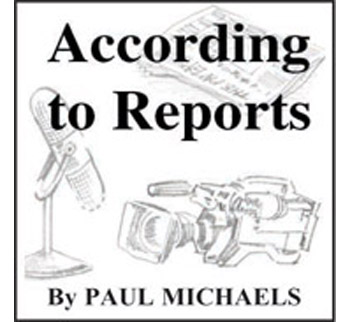Dexter Filkins might not have broken any new ground with After Syria, the cover story of the Feb. 25 New Yorker magazine, but he certainly fills in a lot of details in a riveting manner.
Reporting from Lebanon, Filkins discusses Hezbollah, its domination of the country, and its effort to maintain its stranglehold by fighting in Syria to prop up Assad’s regime. After all, Hezbollah depends upon massive amounts of weapons – flown from Iran to Syria, where they are loaded onto trucks bound for Lebanon. Should Assad fall, this vital supply route would be imperilled. To keep it intact is as essential for Hezbollah’s sponsor Iran as it is for Hezbollah itself.
Iran’s Revolutionary Guard has trained, supplied and financially supported Hezbollah from the movement’s inception in 1982. Hezbollah became Iran’s “advanced force” (in Filkins’ words) to confront Israel. He cites Paul Salem of the Carnegie Middle East Center in Beirut who dramatically remarked: “Hezbollah is an Iranian aircraft carrier parked north of Israel.”
But as much as Hezbollah’s raison d’être is to do Iran’s bidding against Israel, it has to weigh its own future as the major Shia force facing the Sunni surge against Assad next door, and its spillover effect in Lebanon. Filkins spent time in a southern Beirut neighbourhood near Hezbollah headquarters with ”Dani,” one of the group’s commanders. These same headquarters, incidentally, were rebuilt with Iranian money after being destroyed by Israeli aircraft in the 2006 war.
“It was clear,” Filkins writes, “that Hezbollah’s leaders had concluded that any change in Syria was almost certain to wash across the border, and that they were getting ready. ‘If the Sunnis take over Syria,’ Dani told me, ‘we’re going to be fighting them in Beirut.’”
Currently, Sunni and Shia Lebanese are already battling each other – in Syria. Sunni Lebanese who have joined the Free Syrian Army are clashing with Hezbollah fighters across the border in Assad’s war-torn state, but try to avoid doing so on the Lebanese side out of concern that events could spiral out of control there. The fear, however, is that the longer the fighting in Syria continues, the greater the likelihood that Lebanon could once again be plunged into civil war.
Filkins provides a glimpse of this drift: “On a recent Friday morning in Sidon, a crowd of 3,000 Sunnis gathered at the Bilal bin Rabah mosque. They had come to hear Sheikh Ahmed al-Assir, one of the country’s best-known Sunni preachers. Sidon is a Sunni-majority city in a region dominated by Hezbollah. In recent months, as the Syrian civil war has taken on a sectarian character, Sunni-Shia tensions have risen in Sidon, and Assir’s sermons have become inflamed.”
Filkins quotes Assir from one of these sermons: “You know, [Hezbollah leader] Hassan Nasrallah says he’s not involved in Syria… And he’s a liar! They rape women. They are slaughtering our children.”
Assir also railed against Hezbollah’s oppressive domination in Lebanon, predicting, according to Filkins, that Sunnis will rise up against Hezbollah just as they did against Assad. Others, however, caution that Hezbollah is simply far too strong to be confronted. For instance, Druze leader Walid Jumblatt (who has been in an uneasy alliance with Hezbollah) told Filkins that it would be “suicidal” to take on Hezbollah given its overwhelming strength. (The last time Hezbollah was challenged – in 2008, to give up its private communications network, not its weapons – it reacted by killing dozens of Sunnis and Christians.) Jumblatt also disputed the common assumption that Hezbollah would be weakened were Assad to fall, given that the movement already possesses some 50,000 missiles and is seeking alternative supply routes.
Filkins concludes by noting that, for all its problems (including a possible weakening of its role in the Lebanese Parliament as June elections draw near), Hezbollah remains determined, according to Dani, to prepare for the next round in its war against Israel.
Paul Michaels is director of research and senior media relations for the Centre for Israel and Jewish Affairs.
